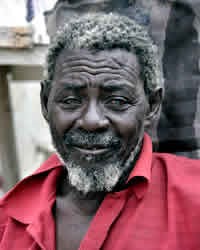Socotran in Yemen

Photo Source:
Rod Waddington - Flickr
Creative Commons
|
Send Joshua Project a map of this people group.
|
| People Name: | Socotran |
| Country: | Yemen |
| 10/40 Window: | Yes |
| Population: | 155,000 |
| World Population: | 173,000 |
| Primary Language: | Soqotri |
| Primary Religion: | Islam |
| Christian Adherents: | 0.00 % |
| Evangelicals: | 0.00 % |
| Scripture: | Portions |
| Ministry Resources: | No |
| Jesus Film: | No |
| Audio Recordings: | No |
| People Cluster: | Arab, Arabian |
| Affinity Bloc: | Arab World |
| Progress Level: |
|
Introduction / History
The Socotran live on the island of Socotra, which is located in a body of water between the Horn of Africa and the Arabian Peninsula. Socotra's name is traced back to Sanskrit (an ancient Indic language), meaning "island abode of bliss," and is mentioned in various legends.
The inhabitants of Socotra are believed to be a mixture of Greek, Portuguese, African, and Arabs. Their language is a version of the ancient Himyarite language, which was spoken in pre-Islamic Arabia for many centuries.
Socotra was long ruled by the Mahra sultans of southeastern Yemen. Their rule was interrupted by Portuguese occupation between 1507 and 1511. In 1834, the British tried, but failed, to purchase the island. However, in the 1880s, the sultan accepted British protection for the sultanate. The sultanate finally came to an end in 1967, when Socotra became part of Yemen.
What Are Their Lives Like?
The people live in two distinct zones with differences and similarities in lifestyles. The coastal people are fishermen. The mountain Socotran are semi-nomadic Bedouin. They have "home" villages, but wander very large areas with their goats, cows and sheep. There are also camels in both regions. They used to be known as beasts of burden, and provide meat, hair and milk. Nowadays, people use trucks.
The island's principal exports include ghee (clarified butter), fish and frankincense. The capital (and largest town) is Hadibo, which is located on the northern coast. The basic diet is rice, fish (on the coast) bread, goat, and sheep. Flour, sugar and rice and other staples are brought to the island by ship if the seas are quiet. Fuel also must be brought in, so it's expensive. People fill gas bottles when the opportunity arises.
Socotra is inaccessible to ships during the monsoon season. Socotra has an airport serving flights from Abu Dhabi and Cairo. One has to go through a licensed travel agent, and it is very expensive to visit this island. There are large numbers of people from Socotran descent living in UAE.
The island is hot in the summer. The winter weather is very comfortable. There are also monsoonal winds when ships cannot berth. There are a few hotels in Hadibo, sometimes used by tourists, and a newer one close to the airport that has good internet. Since about fall 2021 there has been a low but steady flow of tourists going to the island (which is an UNESCO World Heritage Site) during the winter months.
The island has long fascinated scientists because of its high numbers of rare plant species. The plants of the region are related to those of the northeast African highlands and the plains region of Somalia. Altogether, 216 species are unique to Socotra, of which 85 are considered to be threatened.
What Are Their Beliefs?
There is evidence that Christianity was introduced to the people of Socotra as early as 535 AD, when a Nestorian Bishop resided on the island. Most likely the Christian church there was a result of the work of the Apostle Thomas. The Socotran remained faithful to their beliefs as late as 1542, when St. Xavier visited them on his way to India. Sadly, by 1680, Christianity was virtually extinct, due to both oppression by the Arabs and the neglect of the Nestorian patriarchs to support the mission on the island.
Today the Socotran are almost completely Muslim. Most are Sunni. Their forms of Islam are often unorthodox, but their practices are becoming more orthodox because of influences from the mainland. Women wear the lithma or the black burka which they did not do some years ago. However, the women in isolated mountain villages are more relaxed and wear the typical bright colors. Young men hope for better opportunities for economic success if they leave Socotra.
What Are Their Needs?
Their needs are mainly dietary and medical. There are no commercial vegetable gardens, only small village plots that are dependent on a meager water supply. International aid projects have paid for a new hospital, schools, roads and infrastructure. They are chronically short of teachers for the towns and villages. Teachers come from the mainland for short terms. The roads to the main tourist attractions are paved and in fairly good shape. However, internet access remains difficult.
Prayer Points
Ask the Lord of the harvest to send more laborers into Yemen to minister life to the Socotran.
Pray that Christian satellite TV broadcasts will be made available in the Socotran language.
Ask God to add new prayer teams who will break up the spiritual soil of Socotra through regular worship and intercession.
Ask the Lord to bring forth a strong and growing Socotran church planting movement that will bless them in every way.